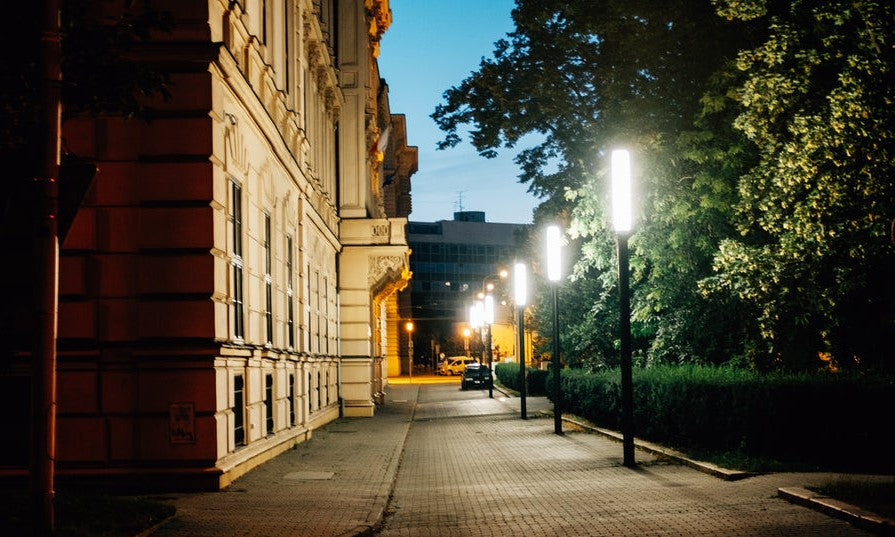LED lamps have become increasingly popular in recent years due to their energy efficiency, long lifespan, and versatility. They come in a variety of shapes, sizes, and color temperatures to suit various lighting applications
Brightness: LED lamps produce brighter light than traditional lamps, which means you can use fewer fixtures to achieve the same level of illumination. This can save you money on equipment costs and reduce visual clutter in your landscape.
Safety: LED lamps produce less heat than traditional lamps, which reduces the risk of fire or burns. They also don't contain harmful chemicals like mercury, which makes them safer to handle and dispose of.
In this article, we will discuss the different types of LED lamps and their characteristics to help you choose the right one for your lighting needs.
- Bi-pin LED Bulbs
Bi-pin LED bulbs are named after the two pins on the base of the bulb that connect it to the socket. They are available in various shapes, such as G4, G5.3, G6.35, G8, G9, GY6.35, and MR16, and are designed to replace traditional halogen and incandescent bulbs. Bi-pin LED bulbs are available in different color temperatures, ranging from warm white (2700K) to cool white (5000K), and can be dimmable or non-dimmable depending on the type.
- PAR LED Bulbs
PAR (Parabolic Aluminized Reflector) LED bulbs are used for directional lighting in track lighting, recessed lighting, and outdoor floodlights. They have a reflective coating that directs light in a specific direction, making them ideal for accent lighting or highlighting specific objects or areas. PAR LED bulbs come in a range of beam angles from narrow spot (10 degrees) to wide flood (60 degrees).
- MR LED Bulbs
MR (Multifaceted Reflector) LED bulbs are similar to PAR bulbs but have a smaller form factor and are used in more compact lighting fixtures. They are commonly used in accent lighting, display lighting, and retail lighting. MR LED bulbs come in a range of beam angles from narrow spot (10 degrees) to wide flood (60 degrees).
4. LED Strip Lights
LED strip lights are flexible strips of LED lights that can be used for various applications, such as under-cabinet lighting, cove lighting, and accent lighting. They come in a range of colors and color temperatures and can be cut to size to fit any space. LED strip lights are also dimmable, making them a versatile option for creating different lighting effects.
The different types of LED lamps and their characteristics is crucial in choosing the right one for your lighting needs. Bi-pin LED bulbs are ideal for general lighting, PAR and MR LED bulbs are ideal for directional lighting, and LED strip lights are ideal for creating ambient lighting. Make sure to consider the color temperature, beam angle, and form factor when selecting an LED lamp for your space.
FAQ
Q. Are all MR16 lamps the same?
A. No, not all MR16 lamps are the same. MR16 lamps come in different sizes, shapes, and with different electrical specifications, making them suitable for various lighting applications.
Q. What is the difference between a T5 Wedge and a Bi-pin?
A. The main difference between T5 Wedge and Bi-pin connectors is the shape of the connector. T5 Wedge connectors are wedge-shaped, while Bi-pin connectors are pin-shaped. The choice of connector depends on the specific application and the type of lighting fixture. Some fixtures are designed to accept only one type of connector, so it's important to choose the right type of connector when selecting T5 lamps.
Q. Do all lamps come with an RGBW option?
A. No, not all lamps come with an RGBW option. RGBW stands for Red, Green, Blue, and White, and it's a type of LED lamp that can produce a wide range of colors by mixing different intensities of the four primary colors. While RGBW lamps are becoming more popular, not all lamps are designed with RGBW technology. Some lamps may only produce a single color or a limited range of colors, while others may use a different color mixing system such as RGB or RGBA. It's important to check the specifications of a lamp before purchasing to see what color options it offers. Additionally, RGBW lamps may be more expensive than other types of lamps, so it's important to consider the cost when deciding whether to invest in this type of lamp.
Q. Are Edison Lights LED?
A. No, Edison lights are not LED lights. Edison lights are also known as vintage or filament bulbs, and they have a distinctive look that resembles the first light bulbs created by Thomas Edison. These bulbs typically use tungsten filaments and are designed to emit a warm, soft, amber-colored light. In contrast, LED lights use semiconductor materials to generate light and are known for their energy efficiency and long lifespan. While there are LED bulbs that are designed to mimic the look of Edison bulbs, they are not the same thing as true Edison lights.
Related Articles:
Getting started with a Landscape Lighting Project
Understanding Color Temperature and Beam Spreads. What's Their Significance for Your Landscape Lighting
RGBW Color Changing MR16 Options For Landscape Lighting
What are the variations between different types of LED lamps?






Leave a comment